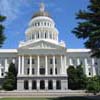New Law Could Reduce Public School Energy Costs

November 2018
Number 69
A new law aims to reduce the high costs public schools pay for energy. Throughout California, K-12 schools are spending a significant portion of their general fund-nearly $700 million-just to keep the lights on. This amount is nearly equal to what public schools dedicate to books and supplies for students. Assembly Bill (AB) 2068 seeks to reduce energy costs in the future by requiring public utilities to evaluate and report the feasibility and economic impacts of establishing discounted utility rates for public K-12 schools.
Electrical and gas corporations (public utilities), in conjunction with the California Public Utilities Commission (CPUC), establish the amount a utility can collect from its customers to cover anticipated costs and reasonable profit. Once this amount is established, the CPUC and utility then create customer "classes" and rates for each class. This division into separate classes and rates reflects a recognition that different general categories of customers place different demands upon the electrical system and therefore it is appropriate to charge users differently. Public schools have generally been placed in a "nonresidential" or "commercial" class rate, despite the fact that public schools have electricity use patterns that differ from the other users placed in their same class. For example, schools typically experience a significant reduction in electricity demand in the mid-afternoon through the next morning and during the summer months, while electricity demand for typical commercial users would not be subject to school day and school year fluctuation patterns.
AB 2068 will require public utilities to evaluate the feasibility and economic impacts of establishing a utility rate class specific to public schools that would reflect a discount from the current rate structure. Public utilities are required to submit their findings to the CPUC by no later than January 1, 2020, which will then be forwarded to the California Legislature.
While AB 2068 does not offer immediate relief to public schools, it at least demonstrates the Legislature's awareness of the issue and may provide a path to reduced energy costs in the future. In the meantime, schools may still pursue other options for increasing energy efficiency, like taking advantage of remaining Proposition 39 funding or the recently enacted Clean Energy Job Creation Program for energy efficiency projects. (For further discussion of Proposition 39 or the Clean Energy Job Creation Program, see 2017 Client News Brief No. 42.)
If you have any questions about AB 2068, or any questions about current options for increasing energy efficiency, please contact the authors of this Client News Brief or attorney at one of our eight offices located statewide. You can also visit our website, follow us on Facebook or Twitter or download our Client News Brief App.
Number 69
A new law aims to reduce the high costs public schools pay for energy. Throughout California, K-12 schools are spending a significant portion of their general fund-nearly $700 million-just to keep the lights on. This amount is nearly equal to what public schools dedicate to books and supplies for students. Assembly Bill (AB) 2068 seeks to reduce energy costs in the future by requiring public utilities to evaluate and report the feasibility and economic impacts of establishing discounted utility rates for public K-12 schools.
Electrical and gas corporations (public utilities), in conjunction with the California Public Utilities Commission (CPUC), establish the amount a utility can collect from its customers to cover anticipated costs and reasonable profit. Once this amount is established, the CPUC and utility then create customer "classes" and rates for each class. This division into separate classes and rates reflects a recognition that different general categories of customers place different demands upon the electrical system and therefore it is appropriate to charge users differently. Public schools have generally been placed in a "nonresidential" or "commercial" class rate, despite the fact that public schools have electricity use patterns that differ from the other users placed in their same class. For example, schools typically experience a significant reduction in electricity demand in the mid-afternoon through the next morning and during the summer months, while electricity demand for typical commercial users would not be subject to school day and school year fluctuation patterns.
AB 2068 will require public utilities to evaluate the feasibility and economic impacts of establishing a utility rate class specific to public schools that would reflect a discount from the current rate structure. Public utilities are required to submit their findings to the CPUC by no later than January 1, 2020, which will then be forwarded to the California Legislature.
While AB 2068 does not offer immediate relief to public schools, it at least demonstrates the Legislature's awareness of the issue and may provide a path to reduced energy costs in the future. In the meantime, schools may still pursue other options for increasing energy efficiency, like taking advantage of remaining Proposition 39 funding or the recently enacted Clean Energy Job Creation Program for energy efficiency projects. (For further discussion of Proposition 39 or the Clean Energy Job Creation Program, see 2017 Client News Brief No. 42.)
If you have any questions about AB 2068, or any questions about current options for increasing energy efficiency, please contact the authors of this Client News Brief or attorney at one of our eight offices located statewide. You can also visit our website, follow us on Facebook or Twitter or download our Client News Brief App.
As the information contained herein is necessarily general, its application to a particular set of facts and circumstances may vary. For this reason, this News Brief does not constitute legal advice. We recommend that you consult with your counsel prior to acting on the information contained herein.





